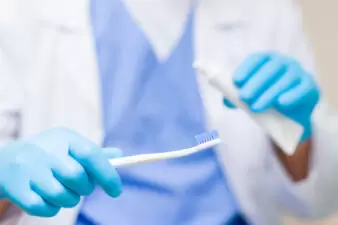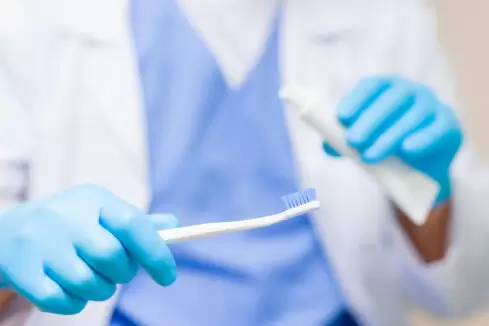
If you’re not happy with your teeth, you’re not alone. According to a survey from the American Association of Orthodontists, one-third of adults in the U.S. are disappointed with their smiles, and 25% of survey respondents to a Harris Poll said they avoid smiling because of their teeth’s appearance.
However, there’s a difference between being unhappy with the appearance of your teeth and being at risk of dental issues such as gum disease. Nearly 46% of all adults aged 30 years or older show signs of gum disease, which can be a big problem if it’s left untreated. That being said, visiting the dentist can sometimes be expensive and outside your budget. Here are some warning signs you may be facing gum disease and some budget-friendly ways to help you combat it.
Warning Signs You May Have Gum Disease
Good oral hygiene is essential for protecting yourself against gum disease. By kindergarten, at least 40% of kids have at least one cavity, and 96% of Americans have some form of tooth decay by the time they reach retirement age. While you may brush your teeth twice a day, there could be a chance that bacteria is still getting stuck in the pockets of your teeth, causing bigger problems than cavities.
Here are some common signs you may have gum disease:
- Bad breath
- Loose teeth
- Swollen or red gums
- Sensitive teeth
- Painful chewing
- Bleeding gums
- Sensitive gums
If you show any of these symptoms of gum disease, it’s important to visit your dentist as soon as possible. Fortunately, there are some ways you can fight gum disease even if you’re on a tight budget.
How to Fight Gum Disease on a Budget
When it comes to fighting gum disease, it doesn’t have to be an expensive process. Some regular daily hygiene practices can protect your gums and your overall health.
1. Receive Regular Cleanings at the Dentist
Even if you brush twice daily, it’s important to your dentist for a professional cleaning. Keep in mind if you’re looking for a new dentist that all orthodontists are trained dentists, but only 5% of dentists are also orthodontists. Your dentist is capable of reaching areas of your mouth you may not be able to reach and using tools they’re specially trained in using to remove tartar from your teeth. What’s more, bi-annual cleanings are typically free with your insurance.
2. Floss and Use Mouthwash Regularly
Once you’re done brushing, don’t forget to floss. Flossing allows you to get to tiny food particles that may be stuck between your teeth. No matter how hard you brush, it can be hard for your toothbrush to reach those spaces. A strong mouthwash, such as Listerine, can effectively kill lingering cavity-causing bacteria in your mouth. Finish off your brushing and flossing by rinsing with mouthwash for a couple of minutes and spitting it out.
3. Clean Your Retainer
As many as 50% of Americans could benefit from going to an orthodontist. Orthodontics involves using devices, such as braces, retainers, and mouth guards on your teeth. According to the American Association of Orthodontists, children can begin orthodontist visits by age 7. Consulting with an orthodontist is a great way to keep up with oral hygiene and protect your teeth. When your teeth are properly aligned, it’s easier to clean each one and avoid decay.
However, don’t make the mistake of not cleaning your orthodontic devices. Whether you have removal Invisalign aligners, retainers, or sleep with a nightguard, they can harbor bacteria since your teeth sit in them for hours daily. Even if you clean your teeth, if you put on a dirty aligner, you could respread those bacteria to your teeth and gums.
As you can see, these are economical ways to prevent gum disease in your mouth. You don’t have to break the bank to buy floss, mouthwash, or something to clean your retainer with. Practicing these daily habits can prevent tooth loss and receding gums that come with periodontal disease.

